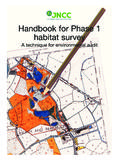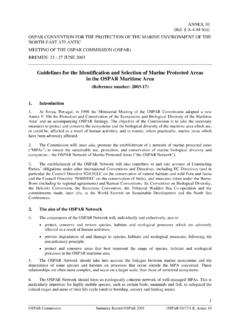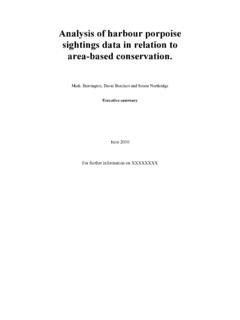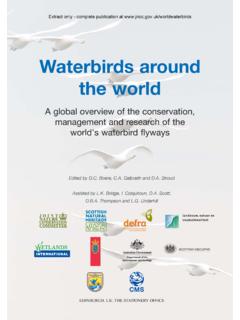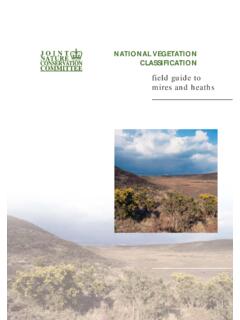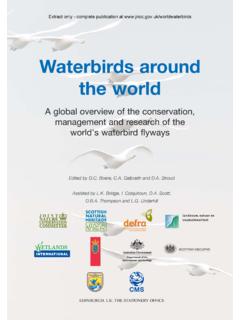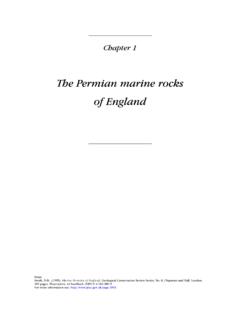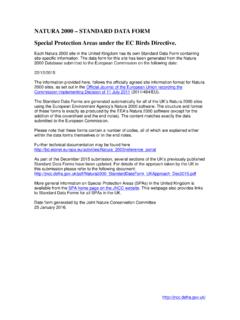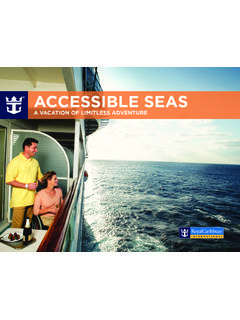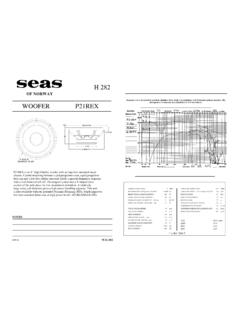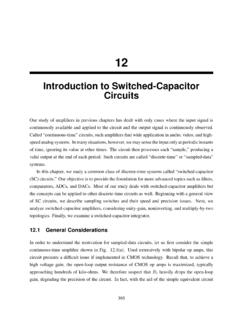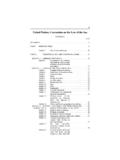Transcription of Seas off Foula Potential Special Protection Area …
1 seas off Foula Potential Special Protection area ( offshore and inshore ) draft conservation objectives and Advice on Operations draft Advice under Regulation 18 of The offshore Marine conservation (Natural Habitats, &c.) Regulations 2007 (as amended), and Regulation 33 of The conservation (Natural Habitats &c.) Regulations 1994 (as amended in Scotland). Version Summary The draft conservation objectives and Advice on Operations for seas off Foula Potential Special Protection area (pSPA) is based on information in the Site Selection Document seas off Foula pSPA . The site covers both inshore (within 12 nautical miles of coast) and offshore (beyond 12 nautical miles of coast) where Scottish Natural Heritage (SNH) and the Joint Nature conservation Committee (JNCC) have respective advisory responsibilities.
2 The draft advice is site- and feature- specific, and has been developed using the best-available scientific information and expert interpretation as at May 2014. The draft advice provided here will be subject to change as our knowledge about the site, its features and the impacts of human activities improve. The Advice on Operations has been generated through a broad grading of sensitivity of features of interest ( interest features ) and their supporting habitats to physical, chemical and biological pressures associated with human activity. Management actions should enable the regularly occurring migratory species great skua Stercorarius skua, Atlantic puffin Fratercula arctica, Arctic skua Stercorarius parasiticus, common guillemot Uria aalge and northern fulmar Fulmarus glacialis) in the seas off Foula pSPA, to maintain their local populations (subject to natural change).
3 This will require assessment and may require management of human activities likely to have an adverse impact on the listed features within the site, including activities likely to affect processes on which the population is dependent recruitment of prey species from supporting habitats. To fulfil the conservation objectives for the features and their supporting habitat, the relevant1 and competent2 authorities for this area should consider human activities within their remit which might affect the site and the conservation objectives of the site as described. 1 Relevant authorities are those who are already involved in some form of relevant marine regulatory function and would therefore be directly involved in the management of a marine site.
4 2 A competent authority is any Minister, government department, public or statutory undertaker, public body of any description or person holding a public office. Contents 1 Introduction .. 1 1 Responsibilities under other conservation designations .. 1 The role of conservation objectives .. 2 Advice on Operations .. 3 2 conservation objectives for the seas off Foula 4 Background to conservation objectives .. 4 seas off Foula pSPA conservation objectives .. 4 3 Advice on Operations .. 11 Advice on Potential operations .. 11 Advice on existing operations .. 12 4 References .. 14 6. Appendix I Supporting information .. 17 1 1 Introduction Background The seas off Foula Potential Special Protection area (pSPA) is being proposed by the UK Government under the Birds Directive (2009/147/EC).
5 If classified, the seas off Foula pSPA would be subject to full Protection under the Birds Directive (which along with the Habitats Directive comprises the Nature Directives ). This document presents a first draft of the advice required under Regulation 183 of The offshore Marine conservation (Natural Habitats & c.) Regulations 2007 (as amended), hereafter referred to as the offshore Regulations , for the seas off Foula pSPA. Supporting information is also provided for transparency and to aid in interpretation. The offshore Regulations transpose the Nature Directives into law for UK offshore waters (from 12-200 nautical miles from the coast or to the limits of the UK Continental Shelf). For more information on JNCCs responsibilities under the offshore Regulations, see Regulation 18.
6 The seas off Foula pSPA, although primarily (56%) in offshore waters (between 12 and 200 nautical miles from the coast), overlaps inshore Scottish territorial waters (between 0 and 12 nautical miles from the coast) (44%). It is therefore subject to requirements under Regulation 334 of The conservation (Natural Habitats &c.) Regulations 1994 (as amended in Scotland) hereafter referred to as the conservation Regulations . The conservation Regulations transpose the Nature Directives into law on land and in territorial waters of Scotland (out to 12 nautical miles from the coast). For more information on requirements under the conservation Regulations, see Regulation 33. This document fulfils requirements both of Regulation 18 of the offshore Regulations, and Regulation 33 of the conservation Regulations.
7 The Habitats Regulations encompass both the offshore Regulations and the conservation Regulations. Responsibilities under other conservation designations Other designations within or adjacent to the seas off Foula pSPA are: 3 Regulation 18 requires that JNCC establish conservation objectives for a European offshore marine site (SACs and SPAs) and notify those objectives to the appropriate competent authorities; and advise such competent authorities of any operations which may adversely affect the integrity of the site. 4 Regulation 33(2) requires Scottish Natural Heritage to advise relevant authorities on the conservation objectives and operations which may cause deterioration of natural habitats or the habitats of species, or disturbance of species for which the sites have been designated, for inshore European protected sites in Scotland.
8 2 Foula SPA (with extension) designated for: Birds Directive Annex I species during breeding season Arctic tern Sterna paradisaea, Leach s storm petrel Oceanodroma leucorhoa and red-throated diver Gavia stellata Regularly occurring migratory species during breeding season great skua Stercorarius skua, common guillemot Uria aalge, Atlantic puffin Fratercula arctica, and European shag Phalacrocorax aristotelis. The obligations of relevant5, and other competent6 authorities and organisations under such designations and legislation are not affected by the draft advice contained in this document. The role of conservation objectives conservation objectives (as set out in Section 2) are the starting point from which management schemes and monitoring programmes may be developed as they inform the scope of appropriate assessments.
9 The conservation objectives set out what needs to be achieved for the site to make the appropriate contribution to the conservation status of the features for which the site is designated and thus deliver the aims of the Birds Directives. Competent Authorities can use the conservation objectives to meet their obligations to ensure integrity of the site (more information on obligations of competent authorities is in Regulation 18). The conservation objectives for features on the site may inform the scope and nature of any appropriate assessment under the Habitats Regulations. An appropriate assessment will also require consideration of issues specific to the individual plan or project. The scope and content of an appropriate assessment will depend upon the location, size and significance of the proposed project.
10 JNCC and SNH will advise on a case-by-case basis. Following an appropriate assessment, competent authorities are required to ascertain the effect on the integrity of the site. The integrity of the site is defined as the coherence of its ecological structure and function, across its whole area that enables it to sustain the habitat, 5 Relevant authorities are those who are already involved in some form of relevant marine regulatory function and would therefore be directly involved in the management of a marine site. 6 A competent authority is any Minister, government department, public or statutory undertaker, public body of any description or person holding a public office. 3 complex of habitats and/or the levels of populations of the species for which it was classified (Institute of Ecology and Environmental Management 2010).

